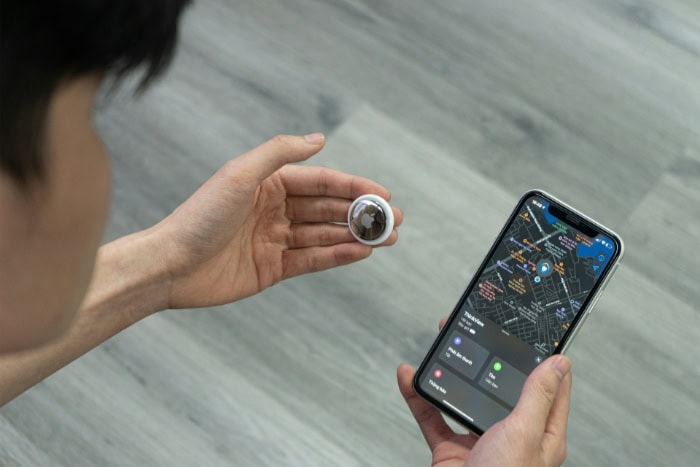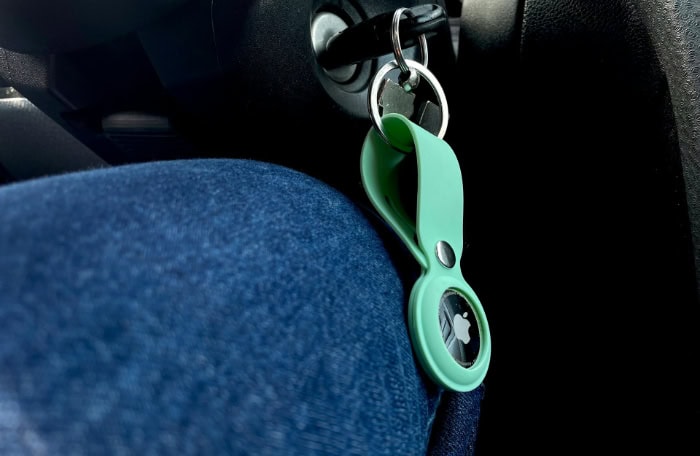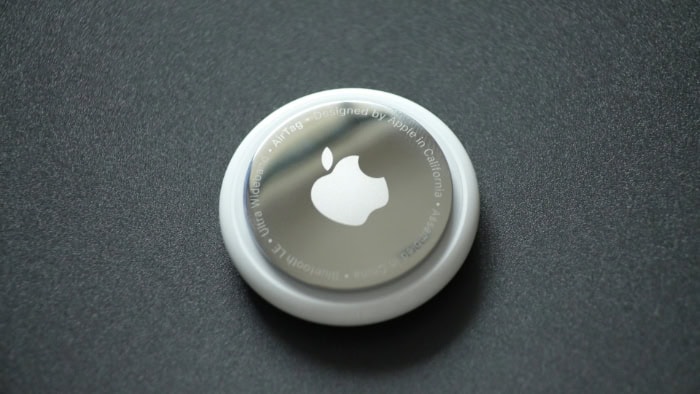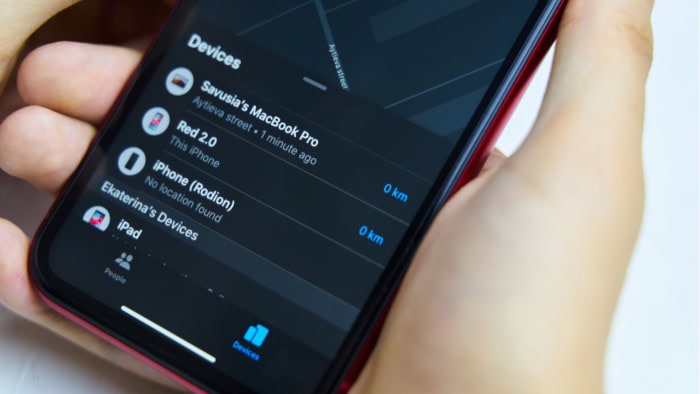How AirTags Work: Finding Lost Items Made Simple

Losing your keys, wallet, or bag can quickly turn a good day upside down, but Apple’s AirTags offer a sleek and effective solution to this all-too-common problem. These small, coin-shaped devices have gained immense popularity for their ability to help users locate misplaced items with ease.
Designed to integrate seamlessly with Apple's ecosystem, AirTags leverage innovative technology and the power of the “Find My” network to track belongings almost anywhere.
The Technology Behind AirTags
AirTags are powered by advanced technology that ensures accurate, reliable, and user-friendly tracking of belongings. Their small size belies the sophisticated hardware and software that enable seamless communication, precise location tracking, and long-lasting usability.
Bluetooth Low Energy (BLE)
Bluetooth Low Energy, commonly referred to as BLE, is one of the foundational technologies used by AirTags. It allows the device to communicate wirelessly with nearby Apple devices in a power-efficient way.
BLE ensures that AirTags stay connected without draining their battery quickly, enabling them to function for months at a time on a single coin battery.
When you attach an AirTag to an item, such as your keys or backpack, it emits a Bluetooth signal that can be detected by nearby Apple devices, such as iPhones, iPads, or even Macs. These nearby devices then anonymously relay the AirTag’s location data to Apple’s “Find My” network.
This process happens in the background without compromising your privacy, as we'll discuss later. BLE plays a critical role in ensuring the AirTag remains discoverable, even in areas where Wi-Fi or cellular network coverage is limited.
Ultra Wideband (UWB)
Another groundbreaking feature of AirTags is their use of Ultra Wideband (UWB) technology for Precision Finding. UWB is a short-range, high-frequency communication protocol that works with incredible accuracy.
Precision Finding is a feature exclusive to iPhones equipped with a U1 chip, such as the iPhone 11 and newer models.
UWB enables AirTags to provide directional guidance, showing you the exact distance and direction to your lost item. This technology transforms your smartphone into a digital guide, complete with arrows, haptic feedback, and visual cues to lead you straight to your AirTag.
Whether your lost keys are nestled under a couch cushion or hidden in the corner of a room, UWB ensures you don’t just know the general location; you know exactly where to look.
Find My Network
The “Find My” network is one of the standout aspects of AirTag technology, leveraging the sheer scale of Apple’s device ecosystem. The network is made up of millions (if not billions) of Apple devices worldwide, all working together in a secure and anonymous manner to help locate lost items.
When an AirTag is unable to connect directly to your phone, it enlists the help of nearby Apple devices to relay its location. For example, if you accidentally leave your bag with an AirTag attached at a café, another iPhone user who happens to walk by can unknowingly help locate it.
The AirTag securely sends its location data to the nearby Apple device, which then uploads it to the cloud and updates the location on your “Find My” app.
This entire process is encrypted and anonymous. Neither the owner of the nearby Apple device nor Apple itself can see the identity of the AirTag or the owner.
It’s an ingenious way to crowdsource tracking without compromising privacy.
Battery and Hardware Features
AirTags are designed with the user in mind, offering a blend of simplicity and practicality. At the heart of their hardware design is the replaceable CR2032 battery, which is easy to find in stores and provides a lifespan of approximately one year with standard usage.
When the battery runs low, your iPhone will notify you so you can replace it promptly.
The AirTag also features a small built-in speaker, essential for emitting audible alerts. This speaker can play a distinct sound to help you locate your item, even if it’s hidden from sight.
The compact design of AirTags ensures they’re lightweight and unobtrusive, making them easy to attach to a wide range of items. They are also water- and dust-resistant, so you don’t have to worry about minor spills or exposure to the elements.
Each aspect of the AirTag's technology, from its connectivity features to its hardware design, works together seamlessly to create a powerful and convenient tracking device.
How to Use AirTags

AirTags are designed to be easy to use, offering a simple yet effective way to keep track of your essential belongings. Whether you’re attaching them to your keys, inserting one into your wallet, or securing it to a backpack, AirTags integrate seamlessly with your devices through the “Find My” app.
Let’s walk through how to set up and use these trackers so that you can ensure your items are always within reach.
Setup Process
Getting started with AirTags is effortless, especially for those already familiar with Apple products. When you first unbox your AirTag, activating it requires just a few taps.
Start by bringing the AirTag close to your iPhone or iPad. A prompt will appear on your screen, much like when pairing AirPods, asking if you’d like to connect the AirTag.
Once you tap “Connect,” you’ll be prompted to give your AirTag a name, such as “Keys,” “Laptop Bag,” or “Wallet,” depending on what you’re planning to track.
After naming your AirTag, it is automatically linked to your Apple ID. This means only you can access its location through the “Find My” app, ensuring your AirTag is secure from unauthorized use.
Once paired, it’s ready for use, and you can attach it to your chosen item.
Attaching to Items
AirTags are versatile and designed to be attached to a wide range of everyday items. They don’t come with built-in loops or mounting holes, but this is where accessories shine.
You can purchase key rings, loops, or adhesive mounts that hold the AirTag securely in place. These options allow you to attach an AirTag to your keys, luggage, backpack, bike, or even pet collars.
For items like wallets, you can simply place the AirTag inside without the need for additional accessories. Its compact and lightweight design ensures it fits snugly without adding bulk.
AirTags also work well for more creative use cases, like attaching one to a camera bag, storing it in your car, or even securing it to a musical instrument case for added peace of mind.
Locating Items
Once your AirTag is set up and attached to an item, locating it becomes incredibly straightforward with the “Find My” app. Open the app on your iPhone or iPad, and you’ll see the AirTag listed under your devices.
By selecting the AirTag, you can view its location on a map. If it’s nearby but out of sight, you can play a sound through the AirTag’s built-in speaker. The sound is loud enough to help you locate it, even if it’s in another part of your house or tucked under furniture.
For iPhones equipped with a U1 chip, Precision Finding takes the experience to another level. Using Ultra Wideband technology, your iPhone provides detailed on-screen guidance, complete with directions and real-time distance updates.
This feature is especially useful for pinpointing items hidden in hard-to-spot places, like deep inside a couch cushion or under a pile of clothes.
Lost Mode
AirTags become even more powerful when you activate Lost Mode, which is designed to help you recover items that are misplaced further from your location. If an item with an AirTag attached is lost, you can enable Lost Mode directly from the “Find My” app.
Once activated, this mode allows you to enter a contact number or email address. If someone finds the item, all they need to do is tap the AirTag with their NFC-enabled smartphone (including Android devices), which will display your contact details.
Lost Mode also leverages the “Find My” network to update you with the latest location of your AirTag whenever it comes into proximity with another Apple device. You’ll receive a notification on your iPhone as soon as this happens, making it easier to track down your belongings, even if they’ve traveled far from your location.
Best of all, this process is designed with privacy in mind, so your personal information is never shared without your consent.
AirTags offer an intuitive and highly effective system for managing your personal belongings. From an easy setup process to precise tracking and recovery options, they’re a valuable tool for staying organized and regaining peace of mind.
Benefits of Using AirTags

AirTags have quickly become a preferred solution for people looking to keep track of their most important belongings. Beyond their advanced technology, they offer a host of practical benefits that make them both reliable and user-friendly.
Seamless Integration with Apple Ecosystem
One of the biggest advantages of AirTags is how effortlessly they integrate with Apple devices. Pairing an AirTag with an iPhone or iPad takes only seconds, thanks to Apple’s intuitive interface.
Once paired, the AirTag becomes part of the “Find My” app, which is already familiar to most Apple users. This means no third-party apps or accounts are required, as everything works natively.
The functionality extends across Apple’s ecosystem, offering cross-device convenience. For example, if you pair an AirTag on your iPhone, you can still track it on your iPad or MacBook.
This synchronization makes it easier to manage your AirTags, no matter which Apple device you’re currently using. Additionally, features like Precision Finding, sound alerts, and Lost Mode are seamlessly integrated into the same app you already use for locating other devices, like AirPods.
This level of compatibility helps AirTags stand out from other item trackers on the market.
Wide Coverage via Find My Network
AirTags benefit from one of the most extensive tracking networks available: Apple’s “Find My” network. With millions of Apple devices active worldwide, this network ensures that your AirTag can relay its location almost anywhere.
Even if your lost item is far away, as long as there is another Apple device nearby, its location can be updated in the “Find My” app.
For instance, if you forget your bag with an AirTag attached at a busy coffee shop, it’s likely that one of the patrons will have an Apple device that detects the tag. This data is then anonymously shared with you, providing an updated location without compromising privacy.
While competing trackers rely on smaller user bases, Apple’s vast ecosystem offers unmatched reach and reliability.
Ease of Use
AirTags are designed for simplicity, ensuring that anyone can use them without complications. From the straightforward setup process to the intuitive layout of the “Find My” app, the entire system is built to be user-friendly.
There’s no need for technical expertise. Pairing an AirTag is as easy as bringing it close to your iPhone and following the onscreen instructions.
Locating items is also simple and effective. If the tracked item is nearby, playing a sound can guide you to its exact spot. If it’s further away, Precision Finding eliminates the guesswork by guiding you step-by-step to the AirTag’s location.
Additionally, Lost Mode automates the process of alerting you when someone finds your AirTag, removing any extra hassle. This level of ease makes AirTags accessible to a wide variety of users, regardless of technical experience.
Cost-Effectiveness
Compared to other tracking solutions, AirTags offer exceptional value. Priced competitively, they come with premium features like UWB Precision Finding and access to Apple’s expansive “Find My” network, which other trackers rarely match.
The replaceable CR2032 battery, which lasts about a year, adds to their cost-efficiency by eliminating the need for frequent replacements or expensive proprietary batteries.
Moreover, AirTags are versatile, meaning a single device can be used for different purposes, such as securing a bag, attaching it to car keys, or keeping tabs on your luggage while traveling. Their solid build and water-resistant design ensure they last over time, making them a worthwhile investment for everyday use.
Privacy and Security Features

While AirTags are designed to help users keep track of their belongings, privacy and security play a central role in their functionality. Apple has introduced robust features to ensure that AirTags are both safe to use and difficult to misuse.
Anti-Stalking Protections
To prevent AirTags from being used to track people without their consent, Apple has implemented several anti-stalking measures. If an unknown AirTag is detected moving with you over a prolonged period, your iPhone will notify you with an alert.
This feature ensures that you are informed if a device that isn’t registered to your Apple ID is traveling with you.
Additionally, if the AirTag remains separated from its owner for a period of time while in motion, it will emit a sound to alert those nearby of its presence. The sound is designed to draw attention, making it more likely that someone will notice and investigate the device.
These measures discourage misuse while still allowing AirTags to function effectively for their intended purpose.
Encryption and Anonymity
AirTags are built with privacy in mind, and that includes how location data is handled. The “Find My” network operates through end-to-end encryption, ensuring that only the AirTag’s owner can view its location.
The process of anonymously relaying the location of an AirTag involves nearby Apple devices serving as intermediaries. However, neither Apple nor the owner of the helping device can access the AirTag’s information or track its movements.
Each AirTag also uses a rotating Bluetooth identifier to prevent it from being identifiable over time. This means that even if a device interacts with multiple Apple devices, the AirTag’s unique identity cannot be traced back to the user.
Apple’s encryption measures allow AirTags to remain private while still benefitting from the vast coverage of the “Find My” network.
Android Compatibility
Although AirTags are primarily designed for Apple users, Apple has made limited functionality available for Android users to address potential privacy concerns. By downloading the Tracker Detect app from the Google Play Store, Android users can scan for nearby AirTags that are separated from their owners.
This feature allows non-iPhone users to detect if an unknown AirTag is in their vicinity. If an AirTag is found, the app provides instructions for disabling it by removing its battery.
While the experience is not as seamless as it is on Apple devices, this additional step ensures that Android users are not left without a way to protect themselves.
Addressing Misuse Concerns
Apple has taken significant steps to address concerns about how AirTags could be misused. Aside from the anti-stalking protections and Android compatibility measures, Apple has worked closely with law enforcement to further mitigate risks.
If a report is filed about an AirTag being used for malicious purposes, Apple can provide identifying information about the original owner, such as their Apple ID. This makes AirTags traceable by law enforcement in cases of misuse.
Additionally, Apple continues to refine AirTag features to ensure safety. Updates to the AirTag firmware can be delivered through the “Find My” app, allowing Apple to roll out new safeguards as needed.
By maintaining a focus on ethical use, Apple aims to make AirTags a trustworthy tool for tracking items while reducing the chance of harm or abuse.
Limitations and Challenges

While AirTags offer impressive features and benefits, they are not without their limitations. Designed with a focus on Apple users and reliant on specific technologies, AirTags are less effective in certain scenarios or for those outside the Apple ecosystem.
Additionally, challenges such as battery management and ethical concerns highlight areas where improvements or greater awareness may be needed.
Dependence on Apple Ecosystem
AirTags are deeply integrated into Apple’s ecosystem, which heavily limits their functionality for non-Apple users. The pairing process, Precision Finding, and access to the “Find My” app are exclusive to iPhones, iPads, and other Apple devices.
While Android users can leverage the Tracker Detect app to identify nearby AirTags, they don’t have access to the same level of usability, such as real-time tracking or directional guidance.
This dependence on Apple’s ecosystem makes AirTags less appealing to users without iPhones or those who use a mix of platforms. For example, households or workplaces combining Android devices with Apple products may find AirTags inconvenient or impractical, as some of the most useful features remain unavailable outside Apple’s hardware and software ecosystem.
Connectivity Requirements
AirTags rely on nearby Apple devices to frequently relay location data. While this works exceptionally well in urban and densely populated areas, it becomes a challenge in rural or remote regions with fewer Apple devices.
In such areas, an AirTag’s ability to connect to the “Find My” network is hindered, reducing its accuracy in tracking lost items.
For example, if an AirTag-equipped item is lost in a remote hiking location, the chances of another Apple device being nearby are slim. Without other devices to relay the AirTag’s location to the network, its tracking capabilities are significantly diminished.
This makes AirTags less effective for outdoor enthusiasts or users in sparsely populated locations.
Battery Life Management
AirTags use a replaceable CR2032 battery, designed to last approximately one year with standard use. While the battery is relatively inexpensive and easy to replace, managing battery life can still pose a challenge for some users.
Those tracking multiple items may find it inconvenient to monitor and replace batteries on a regular basis.
Additionally, while the “Find My” app does notify users when the battery is running low, forgetting to replace it in time will render the AirTag non-functional until a new battery is installed. For people who rely on AirTags to track important or high-value items, this downtime can be particularly problematic.
Ethical Concerns
Despite Apple’s efforts to address misuse, ethical concerns remain a significant challenge for AirTags. There have been instances where AirTags were used for stalking or unauthorized tracking.
Although anti-stalking measures, such as sound notifications and alerts for unknown AirTags, help mitigate these risks, they are not foolproof and depend on the victim’s awareness or access to compatible devices.
For example, Android users without the Tracker Detect app may remain unaware of an AirTag traveling with them. Similarly, the time delay before an AirTag emits a sound when separated from its owner might provide a window for misuse.
To tackle these challenges, Apple has introduced updates and collaborations with law enforcement, but concerns about unethical usage persist.
AirTags are a powerful tool for item tracking, but their limitations are worth considering. Issues such as ecosystem dependence, connectivity challenges, battery maintenance, and ethical risks highlight areas where Apple continues to refine its approach to ensure safety and convenience for all users.
Conclusion
AirTags offer an elegant and efficient solution for keeping track of personal belongings, combining advanced technology with Apple’s expansive ecosystem. By utilizing Bluetooth Low Energy, Ultra Wideband, and the extensive “Find My” network, they provide accurate and reliable tracking, making locating lost items simpler than ever.
Their user-friendly design, seamless integration with Apple devices, and affordability make them a practical option for everyday use.
However, their dependence on the Apple ecosystem, performance in remote areas, and ethical concerns regarding misuse highlight important considerations. Apple has addressed many of these challenges through privacy protections, anti-stalking measures, and collaboration with law enforcement, though continual improvement is essential.
AirTags represent a powerful tool for organization and peace of mind, particularly for Apple users. They demonstrate how innovative tracking technology can be both accessible and effective, giving users a reliable way to safeguard their belongings while respecting privacy concerns.


